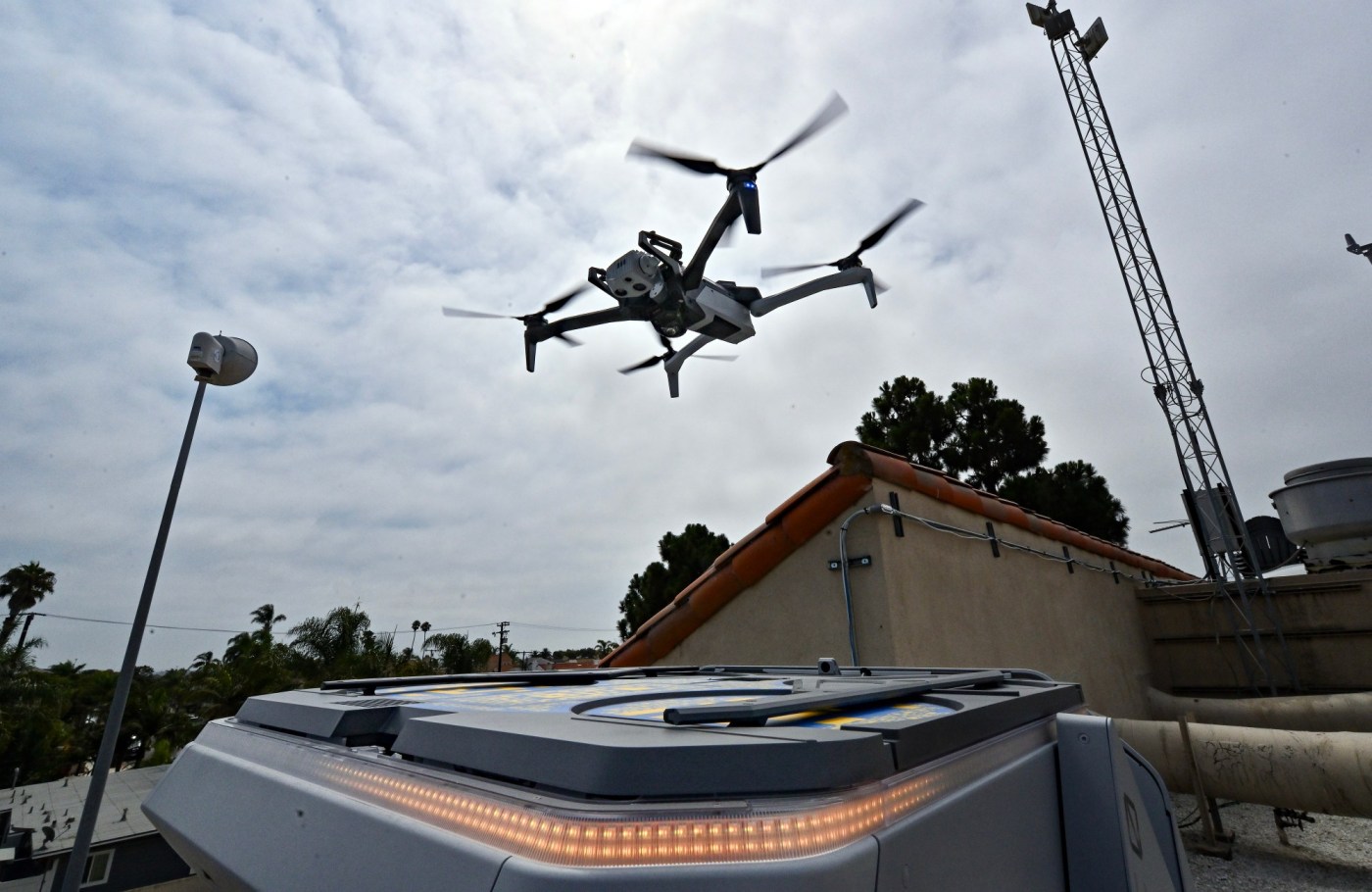When people in Huntington Beach call 911 to report a crime, the first responder who urgently speeds to the scene may soon not be human.
Starting in a few weeks, that first responder might be a drone.
Huntington Beach police will use drones, beginning Sept. 13, to respond to some calls as part of a trend across the country called the Drones as First Responders Program. Police say the unmanned aerial vehicles will slash response times, as they typically respond within two minutes of a 911 call. Drones also can reduce officer responses to false reports and other cases where a police response isn’t necessary.
Huntington Beach police implemented drones in 2018, but officers couldn’t deploy the devices until they responded to a scene because of federal regulations that required operators to see a drone unobstructed throughout its flight.

The department has since obtained a certificate through the Federal Aviation Administration with the help of San Mateo-based drone manufacturer SkyDio. The waiver allows the department to launch and operate drones remotely from three rooftop docks in central Huntington Beach near downtown, in south Huntington Beach and in north Huntington Beach near Bella Terra. The program will cost about $120,000 annually over the next few years, and police hope to eventually expand it with docks across the city.
Drones can arrive at a scene faster than officers and record immediately, allowing police to see the number of people at the scene, what vehicles they’re driving and other details that could help them solve crimes, said Det. Taylor Davoren, one of the police department’s drone pilots. In some cases, police said the drones could capture footage of a crime while it’s still in progress or search for missing people.
When dispatchers receive a 911 call, Davoren said drone operators decide whether or not it would be beneficial to send a drone first. Pilots send drones in cases where video footage would be valuable to the case, which includes property crime or theft calls, crimes that harm another person or cases where there’s a danger to responding officers. Drone operators watch footage remotely and determine whether or not to start recording footage if they believe it could be used as evidence.
Police who operate the drones must pass an FAA exam followed by training at the Huntington Beach Police Department, including a day-long certification for using drones as first responders. The department employs 17 drone pilots who have been certified for the Drone as First Responder program, Davoren said.
The growth of police drone programs is worrisome, said Lauren Bonds, executive director of the National Police Accountability Project, because it’s still unclear how information collected by drones will be used, how the data drones collect could be stored and if that information will be shared with federal law enforcement or other agencies.
“It really does have this potential to contribute to the growing law enforcement surveillance state,” Bonds said, “in that an unmanned drone can capture images and information that wouldn’t be seen by an officer on the street.”
Lt. Christopher Nesmith said the drone program could reduce officer response to false reports or calls where they aren’t needed. During emergencies and natural disasters when cell service or power may be out, Nesmith said drones can help coordinate the department’s response.
“The citizens don’t need to worry about officers spying in their backyards or surveilling them,” Nesmith said. “This isn’t a Big Brother Program. This is a public safety, law enforcement program that will be reactive only for calls of service.”
Similar programs exist at agencies across the region. Irvine police piloted a similar program in 2023, and the City of Hawthorne implemented a drone first responder program last year to respond to police and fire calls. The Los Angeles Police Department also launched a pilot program last month.
More drone as first responder programs are popping up across the country as FAA regulations have become more lenient and drone manufacturers have stepped in to help agencies with receiving the proper waivers to operate drones remotely, said Beryl Lipton, senior investigative researcher with the Electronic Frontier Foundation. While police departments said the technology will be used to reduce crime, Lipton worries its uses will be expanded for other situations, like policing homeless residents and surveilling communities.
“We’re seeing with DFR like a lot of other police surveillance tools, there’s a marketing line about how they’re going to be used in order to fight violent crime,” Lipton said, “but then what we see is that they’re deployed to almost every situation as will be the case with DFR.”
